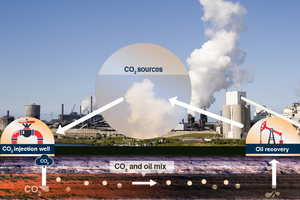Chinese Cement Producers Rush to Swap Old Capacity Before New Rules

China unveiled stricter draft rules Wednesday for new cement-making plants, jacking up the amount of old capacity that producers need to retire as they propose new factories. The tougher regulations intensify a three-year-old program intended to reduce greenhouse gas emissions from the necessary but highly polluting industry.
Under the new rules, cement producers must retire at least 2 tons of outdated capacity for every ton of new capacity in areas classified as environmentally sensitive, up from the current 1.5:1 ratio, the Ministry of Industry and Information Technology (MIIT) said. In non-environmentally sensitive areas, at least 1.5 tons of obsolete capacity should be retired for every ton of new capacity, up from the current ratio of 1.25:1.
As the new draft rules are still open for public comment, cement companies are rushing to get cement capacity-swap projects approved under the current, more lenient requirement before the new, more expensive rules take effect, Wang Qi, a cement industry analyst at commodity market information provider Sublime China Information Co., told Caixin. The higher capacity-swap hurdle will cost manufacturers hundreds of millions of yuan, Wang said.
The Chinese Cement Association said in an opinion article posted Wednesday on its website that the large number of newly announced cement capacity-swap projects “significantly challenges” the effectiveness of the government’s measure to reduce overcapacity by increasing the swap ratio. The MIIT did not say when it expects to publish the final regulations.
If a cement company doesn’t have its own outdated capacity to retire, it has to buy capacity quota from other producers to build any new production line. In July, Shanghai-listed Jilin Yatai (Group) Co. Ltd.’s cement unit sold an outdated cement production line with a capacity of 2,000 tons a day to another producer for 90 million yuan ($13.8 million).
The new rules also add a restriction that cement production lines that have not operated for two consecutive years since 2013 cannot be used for capacity swaps. This restriction aims to prevent companies from using “zombie capacity” to clear the way for new capacity, said former MIIT official Zhao Hui.
Such zombie capacity is mainly concentrated in northeast China, Inner Mongolia and Xinjiang. Under the current swap policy, cement companies can exchange capacity across provinces. Some companies have closed their low-efficiency plants in these regions and built new ones in regions where cement prices are relatively higher.
The Chinese Cement Association suggested that regulators should ban swaps across provinces.
Contact reporter Denise Jia (huijuanjia@caixin.com) and editor Bob Simison (bobsimison@caixin.com).
Download our app to receive breaking news alerts and read the news on the go.

- MOST POPULAR






